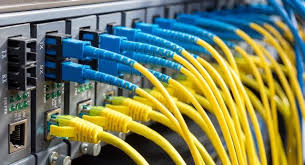We are a leading IT solutions provider, specializing in innovative software development, managed services, and consulting. Our team delivers reliable, cutting-edge technology to drive business success and efficiency.
Loading
We are a leading IT solutions provider, specializing in innovative software development, managed services, and consulting. Our team delivers reliable, cutting-edge technology to drive business success and efficiency.

Structured cabling is a standardized approach to designing and installing a cabling system that supports a wide range of uses, including data transmission, voice communication, and video connectivity. It consists of a series of subsystems, including horizontal cabling, backbone cabling, and telecommunications rooms, all interconnected to ensure reliable communication across an organization. By following established standards, such as those set by the Telecommunications Industry Association (TIA) and the International Organization for Standardization (ISO), structured cabling facilitates easier management, scalability, and troubleshooting of network infrastructure.
One of the key benefits of structured cabling is its ability to support future growth and technology changes. With a well-designed cabling system, organizations can quickly adapt to new technologies, such as higher-speed internet connections and the Internet of Things (IoT), without the need for a complete overhaul. Additionally, structured cabling reduces clutter and confusion often associated with traditional cabling methods, promoting better organization and efficiency. Overall, investing in structured cabling can lead to significant long-term savings and improved performance for businesses.
Improved Network Performance: Structured cabling provides a standardized approach, enhancing data transmission speeds and reducing latency.
Scalability: As your business grows, structured cabling can easily accommodate additional devices and connections without needing a complete overhaul.
Reduced Downtime:A well-organized cabling system minimizes the risk of failures and makes troubleshooting easier, leading to less downtime.
Cost-Effectiveness:While the initial investment might be higher, structured cabling reduces long-term maintenance costs and enhances the efficiency of your network.
Increased Flexibility: It allows for easy reconfiguration of network setups, enabling businesses to adapt quickly to changing needs.
Enhanced Aesthetics: Structured cabling systems keep cables organized and out of sight, improving the overall look of your workspace.
Future-Proofing: With advancements in technology, structured cabling can support new standards, making it easier to integrate new technologies as they emerge.


When it comes to structured cabling, some of the most commonly asked questions include: